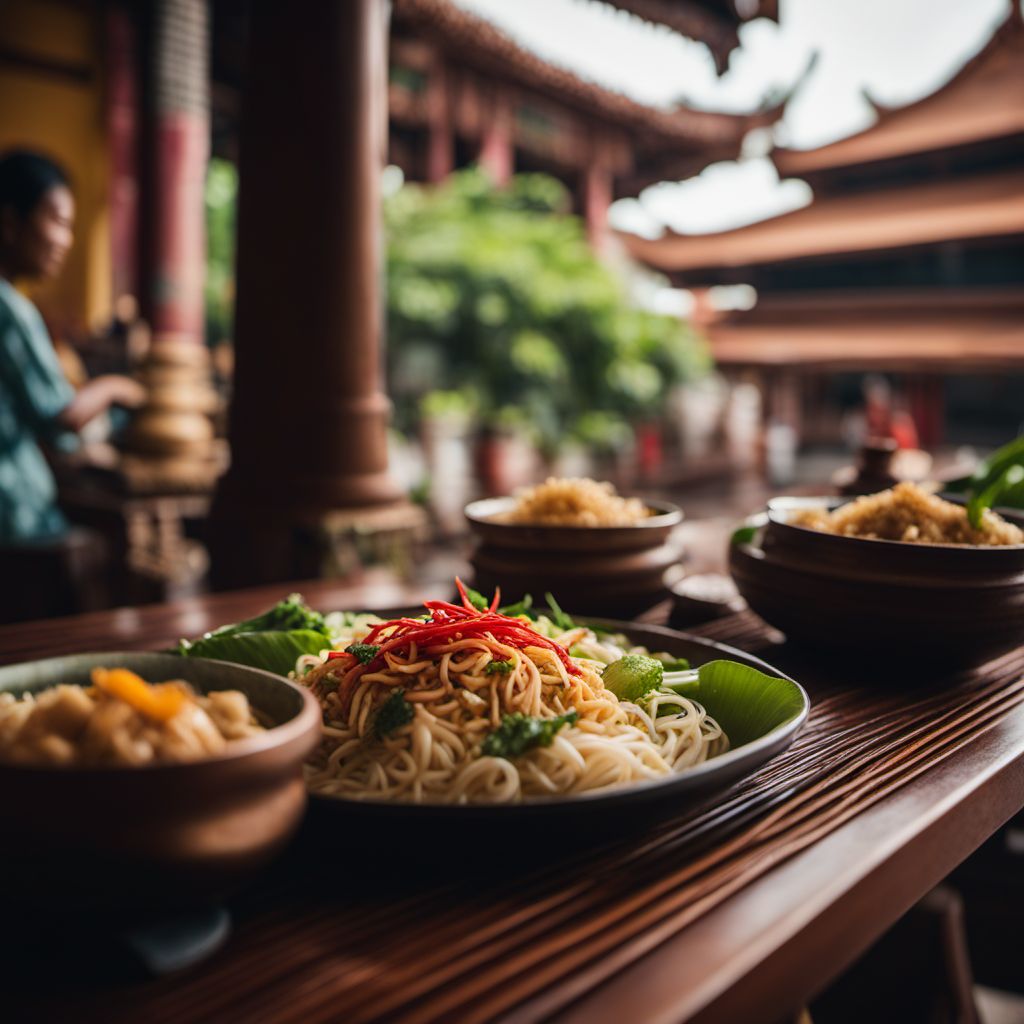
Cuisine
Lao cuisine
Lao cuisine is characterized by its use of fresh herbs and spices, such as lemongrass, galangal, and kaffir lime leaves. The cuisine is also known for its use of sticky rice, which is a staple in Lao cuisine. Lao cuisine is a blend of Southeast Asian and French influences, due to the country's colonial history.
Typical ingredients
Sticky rice, Fish, Vegetables, Herbs, Chili peppers, Pork, Beef
Presentation and garnishing
Dishes are often served family-style, with a variety of dishes placed on the table for everyone to share. Garnishes such as fresh herbs and sliced chili peppers are often used to add color and flavor to dishes.
Lao cuisine is known for its use of fresh herbs and spices, and is a blend of Southeast Asian and French influences.
More cuisines from this region...
History
Lao cuisine has a long history, dating back to the country's pre-colonial era. The cuisine has been influenced by various cultures over the years, including Thai, Vietnamese, and Chinese. During the country's colonial period, French cuisine had a significant impact on Lao cuisine, and many traditional dishes have French roots. Today, Lao cuisine is a blend of traditional and modern influences, and is known for its fresh, flavorful dishes.
Cultural significance
Food is an important part of Lao culture, and is often used in traditional ceremonies and celebrations. Many traditional dishes have French or Thai roots, due to the country's colonial history. The cuisine is also heavily influenced by Vietnamese and Chinese cuisine.
Health benefits and considerations
Many traditional Lao dishes are high in protein and fiber, and are made with fresh, healthy ingredients. However, some dishes may be high in fat and sodium, so it is important to eat them in moderation.
Lao cuisine dishes Browse all »
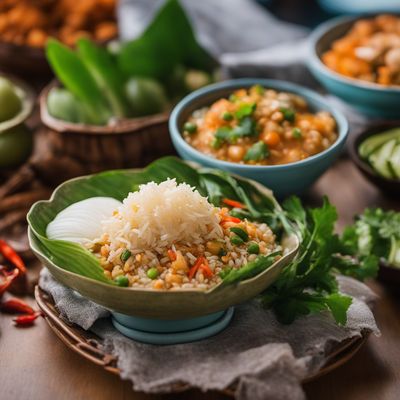
Khao phan phak
Khao phan phak is a traditional Thai dish that is made with rice and vegetables. It is a healthy and nutritious dish that is perfect for a vegetarian or vegan diet.
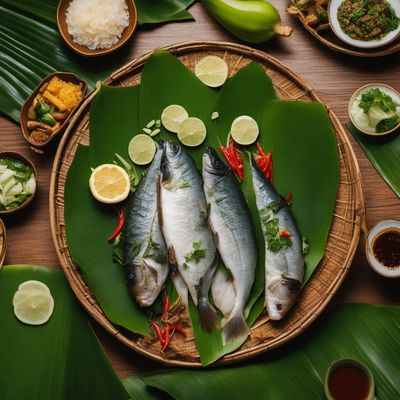
Mok pa
Steamed fish in banana leaves
Mok pa is a traditional Laotian dish that is made by wrapping fish in banana leaves and grilling it over an open flame. The dish is known for its unique flavor and aroma, which...

Khao piak sen
Lao rice noodle soup
Khao piak sen is a traditional Laotian soup made with rice noodles and chicken or pork.

Alivongvong
Alivongvong is a traditional dish from the island of Vanuatu, made with taro leaves and coconut milk.

Jaew bong
Jaew bong dip
Jaew bong is a spicy and sweet dipping sauce from Laos. It is made from chili paste, fish sauce, and palm sugar. It is a popular condiment that is often served with grilled...

Hon mhai
Jumping Ant Egg Salad
Hon mhai is a traditional Lao dish that is made with sticky rice, grilled meat, and a variety of herbs and spices. It is a flavorful and filling dish that is perfect for those...

Khao poon
Lao rice vermicelli soup
Khao poon is a spicy Laotian soup made with rice noodles and a variety of meats and vegetables.

Boûkète
Boûkète is a traditional Lao dish that is made with sticky rice and vegetables. It is a popular dish in Laos and is often served at festivals and special occasions.
Lao cuisine recipes Browse all »

Lao Chicken Noodle Soup
Savory Delight: Lao Chicken Noodle Soup
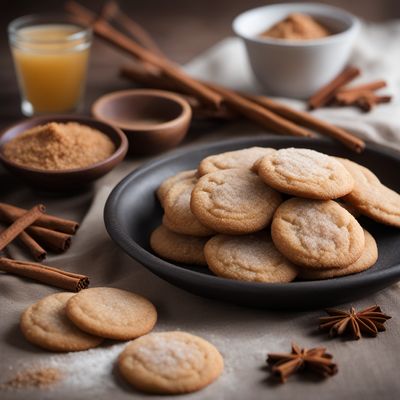
Lao-style Cinnamon Sugar Cookies
Spiced Delights: Lao-inspired Cinnamon Sugar Cookies

Lao-style Stuffed Chicken Rolls
Savory Chicken Delight: Lao-inspired Stuffed Chicken Rolls
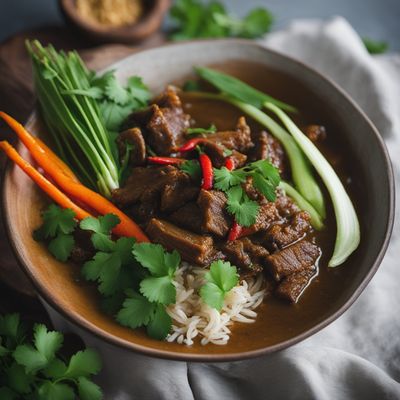
Lao Spiced Lamb Stew
Savory Delight: Fragrant Lao Spiced Lamb Stew
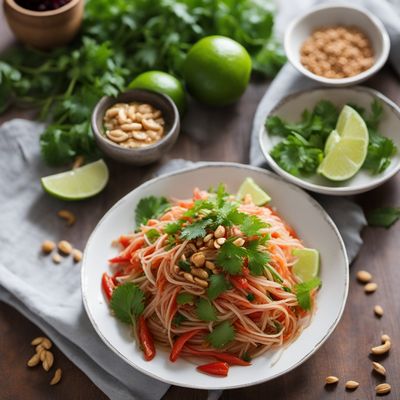
Spicy Green Papaya Salad
Zesty Delight: Spicy Green Papaya Salad
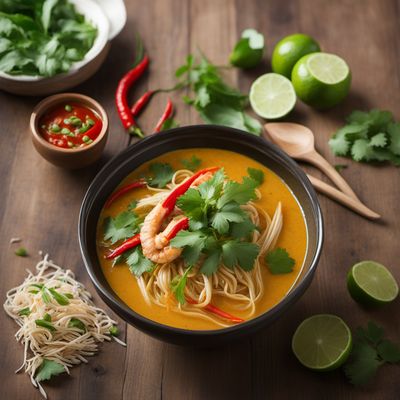
Lao Coconut Curry Noodle Soup
Coconut Delight: A Flavorful Journey through Lao Cuisine
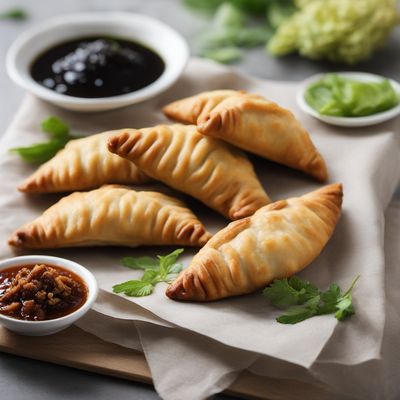
Lao-style Stuffed Pastry (Sai Oua Puff)
Savory Lao Delight: Sai Oua Puff
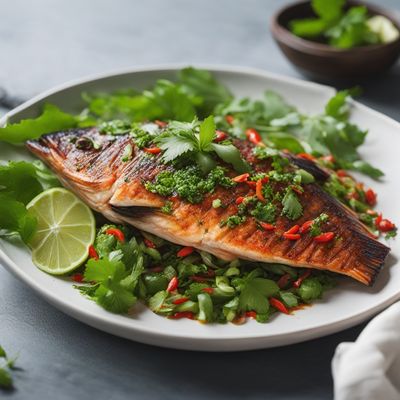
Ping Pa - Grilled Fish with Herb Sauce
Savory Delight: Grilled Fish with Fragrant Herb Sauce

Lao-inspired Spicy Beef Salad
Fiery Flavors: Lao-inspired Spicy Beef Salad

Lao Crispy Seaweed Rolls
Crispy Delights from the Lao Kitchen

Hon Mhai with Lemongrass and Chili Sauce
Fiery Flavors of Laos: Hon Mhai with Zesty Lemongrass and Chili Sauce

Spicy Lao Chili Paste - Jaew Bong
Fiery Delight: Spicy Lao Chili Paste